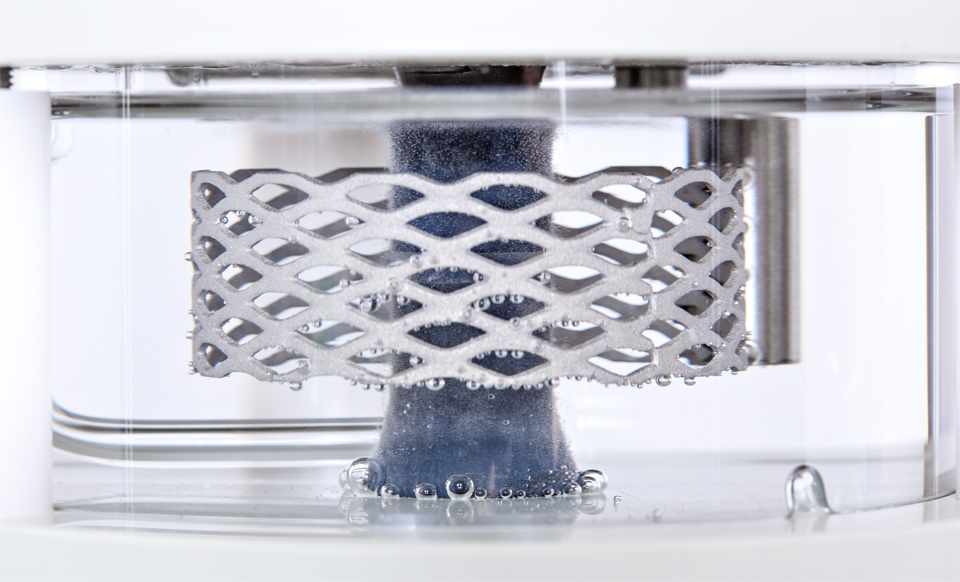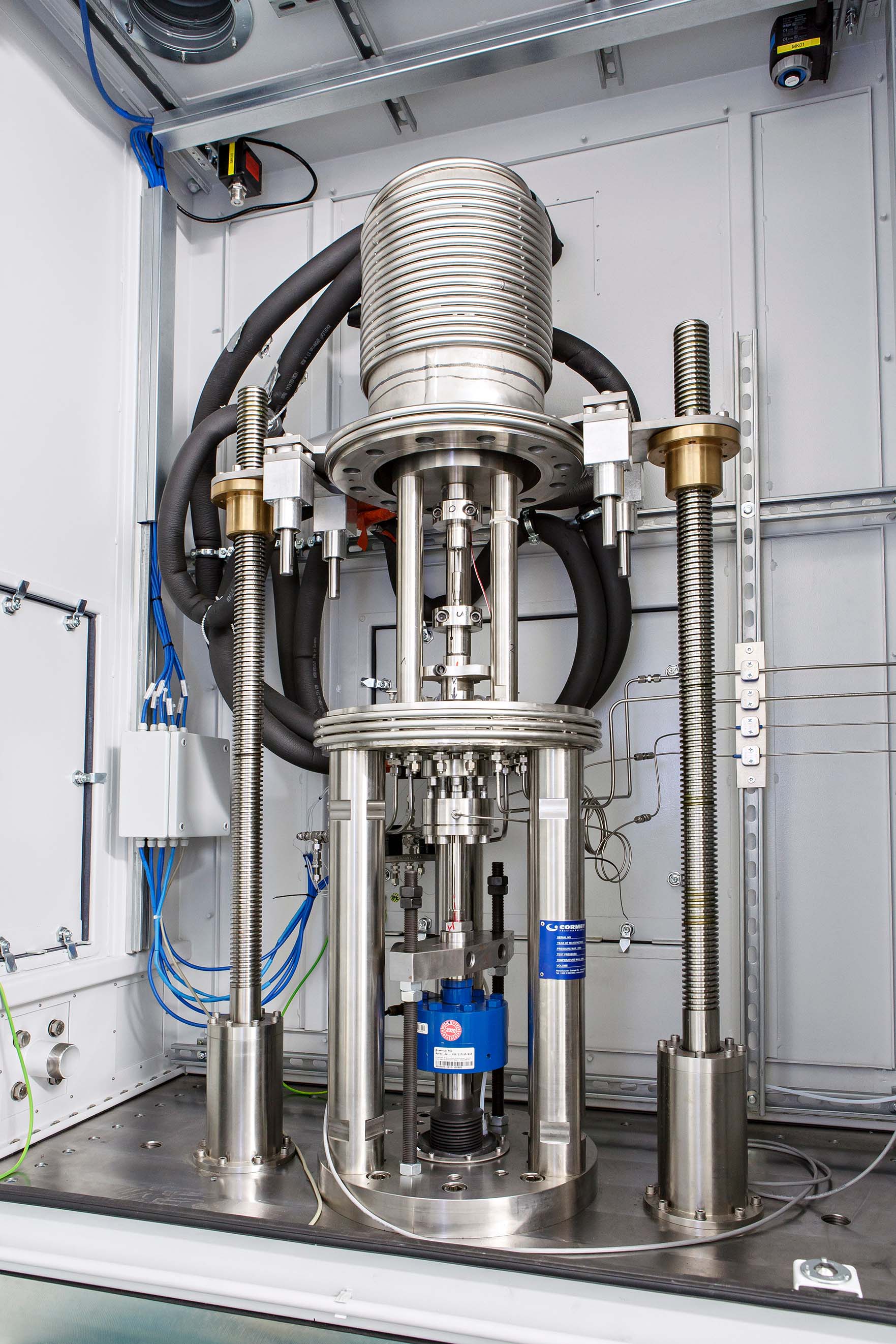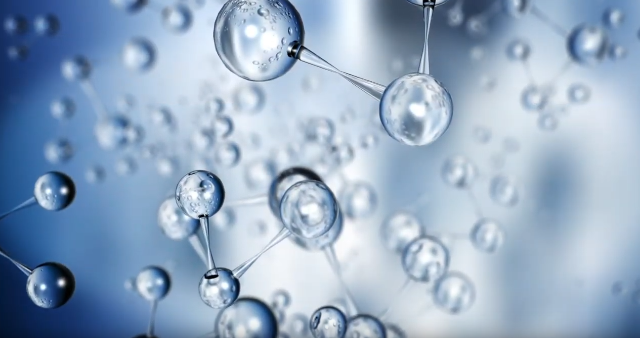Fatigue strength behavior under exposure to compressed hydrogen and electrochemically supplied hydrogen


The disruption of the energy sector through the establishment of a hydrogen-based economy offers the opportunity to exert a long-term positive influence on the environment and global climate protection. However, a rapid switchover will not be so easy, not only because of the lack of available hydrogen but also because of the need to keep the systems operating safely. Hydrogen is known to have an embrittling effect on metallic materials, a phenomenon called hydrogen embrittlement. In light of this, components exposed to hydrogen must be investigated to determine their level of resistance. This is the only way to rule out the risk of premature component failure along with all the associated dangers.
Special test facilities are required to investigate and quantify the stress withstand capacity of materials as a function of the alloy and grade when they are exposed to external loads in a hydrogen environment. The data and findings obtained can be used to identify suitable materials for use in fuel cells, direct combustors, piping and other hydrogen-carrying assemblies and systems, and also to design these materials in the optimum manner for applications involving hydrogen environments.

To enable investigations into cyclic material behavior under exposure to hydrogen, the Fraunhofer Institute for Structural Durability and System Reliability LBF has been using a special test facility for several years. This allows force-controlled and strain-controlled tests to be conducted with compressed hydrogen at gas pressures ranging from 10 to 50 bar. In addition to carrying out reference investigations in an inert nitrogen atmosphere at a pressure of 10 bar, it is also possible to control the temperature of the autoclave with adjustable temperatures ranging from -40 °C to +130 °C.
Together with 24 other Fraunhofer institutes, Fraunhofer LBF is helping to ensure the reliability of components exposed to hydrogen in an internal Fraunhofer research project called H2 DII — “A hydrogen economy for Germany”, which aims to answer some key questions around the establishment of a hydrogen economy in Germany. The areas being researched include the production of hydrogen using electrolysis (focus 2) and the creation of a secure infrastructure and safe technologies (focus 3) for its transport, storage, distribution and use. The investigations concentrate on highly relevant application examples, with focus point H2DIGITAL (focus 4) using a model-based approach to map key components of the value chain. The systemic overall consideration (focus 1) is the final stage. This involves considering all the individual focus points collectively while concentrating specifically on the creation of a future hydrogen economy and how to integrate this technology into the entire energy system.
Within this context, Fraunhofer LBF was responsible for heading up focus point 3 (secure infrastructure) and carried out investigations in this area using the electrochemical cell that had been developed in the course of the internal Fraunhofer research project called H2 D. This cell can be used to apply hydrogen to samples electrochemically while subjecting them to an external load. The application of the external load induces elastic strain in the metal matrix, thereby enabling hydrogen to penetrate and diffuse within the structure more easily, which — in turn — allows more hydrogen to be introduced into the sample. Compared to conventional loading with compressed hydrogen, this testing facility represents a faster and cheaper alternative for making statements about how susceptible metallic materials may be to hydrogen embrittlement.
Using this cell, material samples made of air-hardening forging steel 1.5132 were preloaded with hydrogen for different loading durations ranging from six to 24 hours without applying an external load and then fatigued in air with strain control. The electrolyte took the form of 0.1 M NaOH + 1 g/l thiourea and a constant current density of 10 mA/cm² was maintained. The researchers observed that the fatigue life to crack initiation decreased as the loading duration increased. However, the damage inflicted by the electrochemically applied hydrogen was not sufficient to bring about a reduction in the life of the material comparable to that caused by a compressed hydrogen environment.
Nor could any further significant reduction in the life be achieved by further increasing the preloading duration. Therefore, an external load was applied to the sample during hydrogen loading to introduce more hydrogen into the elastically strained lattice. The samples were subjected to a nominal stress of 700 MPa and — using a similar approach as for preloading without an external load — were loaded with hydrogen for 24 hours. After that, the sample was returned to an air environment and fatigued in a strain-controlled test with a total strain amplitude of sa,t = 0.8%. The results of this investigation demonstrated that this form of electrochemical hydrogen loading is extremely likely to introduce higher quantities of hydrogen into the structure because it tends to bring about a further reduction in the number of cycles to crack initiation compared to preloading without an external load.
The results of the investigations described here revealed that the fatigue-strength-reducing effect of a compressed hydrogen environment can be replicated effectively using electrolytically supplied hydrogen in the case of a selected load level in the low-cycle fatigue range. It became clear that combining electrochemical preloading with simultaneous elastic strain increased the amount of hydrogen entering the sample because this approach further reduced the number of cycles to crack initiation compared to preloading without an external load. Quantitative analysis of the hydrogen content currently still needs to be undertaken. In addition, further projects will investigate whether this type of testing technology is also suitable for load levels in the high-cycle fatigue range involving a longer fatigue life to crack initiation or for longer testing periods.
Fraunhofer LBF helps companies from various sectors — such as transport, energy, and machinery and plant engineering — to develop reliable and efficient lightweight products that are suitable for exposure to hydrogen. This involves using tailored or customized analysis and testing concepts in order to meet the higher requirements concerning proof of structural durability and to achieve optimum replication of the real-life operating conditions.
In order to evaluate how susceptible different materials may be to hydrogen embrittlement, it is absolutely essential to carry out appropriate investigations. This is the only way to rule out the possibility of parts and system components failing prematurely due to a lack of knowledge, which could have fatal consequences for the user.
